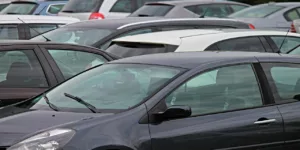Qualcomm has been aggressively pushing technology into vehicles with leading offerings to provide cars with 5/4G connectivity, Bluetooth, C-V2X and most recently Wi-Fi 7. Wi-Fi 7 is a big improvement over Wi-Fi 6 because it offers greater capacity and improves line reliability. It also sets the foundation for coming essential next-generation applications (like self-driving) and opens up the potential for vastly improved car-to-cloud services.
At the Mobile World Congress next week in Barcelona, Qualcomm will demonstrate this and other automotive enhancement technologies that will define cars in the second half of the decade.
Qualcomm in Automotive
What tends to make Qualcomm different is that it engages deeply with those who license from them, assuring that the related solution works as promised. Other vendors have a history of not doing this. Many of the automotive OEMs don’t play well with others. They think they don’t need help from a technology provider. However, too often this lack of engagement results in a system that, while it hits financial targets, underperforms to a degree that the result is on the “con” rather than the “pro” side of any related review.
My first example of this was back in the early 2000s with a Microsoft/Intel offering called Auto PC. The OEM underspecified the processor for the device in order to hit a price target, and the result, instead of being the most impressive, automated AV system in market, was so slow it was unusable. The navigation would often fall so far behind where the vehicle was you had to pull over in order for it to catch up. Otherwise, it would constantly give you directions long after you could reasonably act on them. I put this device in my wife’s car, and she still brings up how annoyed she was with it. If she could have figured out how to rip it out of the dash and toss it out the window, there’s no doubt it’d be on a roadside someplace. This happens when the technology provider and the technology implementor don’t collaborate. The OEM doesn’t understand the technology well and implements it poorly, resulting in a product that sucks.
I’ve had Qualcomm-based systems in several cars that used similar technology, and the result was a massive improvement that changed buyer perceptions from disappointment in the result to being very pleased. This is a combination of the quality of Qualcomm’s offerings and how it works to assure that the result meets or beats expectations.
Wi-Fi 7
Cars are increasingly connected, and they get software patches and application updates (like large file updated maps) increasingly pushed down to them. If the data file gets interrupted, the file is corrupted. If the update fails, the results can vary from having to manually initialize the update to bricking the car, making connectivity speed and reliability critical to assuring the user isn’t disadvantaged by the result.
Wi-Fi 7 is a big jump from Wi-Fi 6 in that it can provide far higher data throughputs and it more efficiently uses the spectrum. The result is around 5x faster download speeds, 2x the bandwidth and far more reliable connectivity.
Given cars’ increasing dependence on this wireless connection, this combination better assures that files transfer more rapidly and safely and result in an improved customer experience and less potential for data corruption that might result in having to have the car towed (or in the case of an electric car, trailered) to the dealer.
It will mean you’ll need a Wi-Fi 7 router, but those have already hit the market. We are unlikely to see cars with this technology before the 2025 model year, so you don’t have to rush out and buy that router yet, at least not for your car.
Wrapping Up:
At some point I expect the technology in cars to get branded much like we brand the sound systems today so that buyers can make more informed decisions with regard to the technology they have learned to trust and chase. Today we see Bang & Olufsen, Harman Kardon, Bose and other branding for the sound systems in cars, but not for the technology that makes those systems work. As cars evolve into full-on entertainment platforms, that extra branding will become increasingly important to users.
Reviewers often can’t even figure out whose technology is being used so they can properly direct their praise or disgust with the result. And this result would help push automotive OEMs into more solutions that work and help them avoid making the kinds of mistakes that have resulted in poor user experiences in the past.
What makes Qualcomm’s automotive and smartphone offerings stand out is that Qualcomm helps assure the solution so that choosing cars with their platform should provide a better experience and far less frustration.








